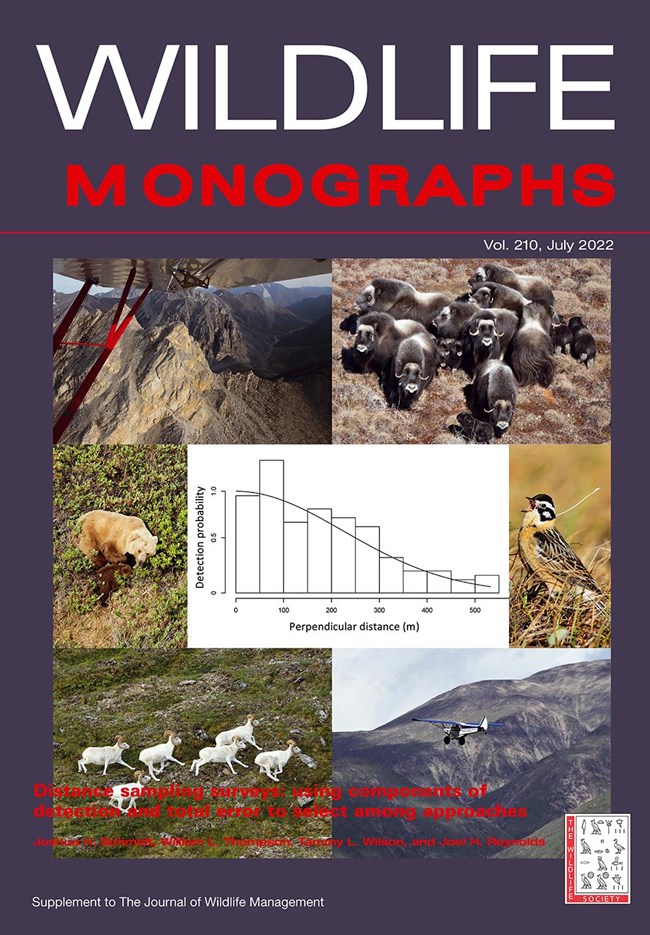Last updated: November 3, 2022
Article
Using Distance Sampling to Estimate Wildlife Populations

Estimating wildlife populations requires adjusting for the fact that some percentage of the population will go undetected. There are different methods available to estimate wildlife abundance, but sometimes it can be confusing to decide which method is the best choice for a particular situation. This article provides a comprehensive review of the different types of distance sampling detailing when each should be employed, what the primary assumptions are, and how best to analyze the data.
We framed our synthesis of the literature in the context of the components of the detection process, helping to clarify what component of the population is actually being measured during a particular survey. As a further aid, we provide example applications based on distance sampling surveys conducted in Alaska to help the practitioner better understand each concept. The inclusion of these examples also allowed us to provide a broad methodological review of a large chunk of the wildlife survey work in Alaska (i.e., sheep, muskox, bears, landbirds, goats). Overall, this work represents a comprehensive guide that can be used by the practitioner to more efficiently, effectively, and appropriately apply distance sampling techniques in a variety of settings.
Distance sampling surveys: Using components of detection and total error to select among approaches
Abstract
Wildlife population estimators often require formal adjustment for imperfect detection of individuals during surveys. Conventional distance sampling (CDS) and its extensions (mark-recapture distance sampling [MRDS], temporary emigration distance sampling [TEDS]) are popular approaches for producing unbiased estimators of wildlife abundance. However, despite extensive discussion and development of distance sampling theory in the literature, deciding which of these alternatives is most appropriate for a particular scenario can be confusing. Some of this confusion may stem from an incomplete understanding of how each approach addresses the components of the detection process. Here we describe the proper application of CDS, MRDS, and TEDS approaches and use applied examples to help clarify their differing assumptions with respect to the components of the detection process. To further aid the practitioner, we summarize the differences in a decision tree that can be used to identify cases where a more complex alternative (e.g., MRDS or TEDS) may be appropriate for a given survey application. Although the more complex approaches can account for additional sources of bias, in practical applications one also must consider estimator precision. Therefore, we also review the concept of total estimator error in the context of comparing competing methods for a given application to aid in the selection of the most appropriate distance sampling approach. Finally, we detail how the use of more advanced techniques (i.e., informed priors, open-population distance sampling models, and integrated modeling approaches) can further reduce total estimator error by leveraging information from existing and ongoing data collection. By synthesizing the existing literature on CDS, MRDS, TEDS and their extensions, in conjunction with the concepts of total estimator error and the components of the detection process, we provide a comprehensive guide that can be used by the practitioner to more efficiently, effectively, and appropriately apply distance sampling in a variety of settings.
Schmidt, J. H., W. L. Thompson, T. L. Wilson, and J. H. Reynolds. 2022. Distance sampling surveys: Using components of detection and total error to select among approaches. Wildlife Monographs 210: e1070.
